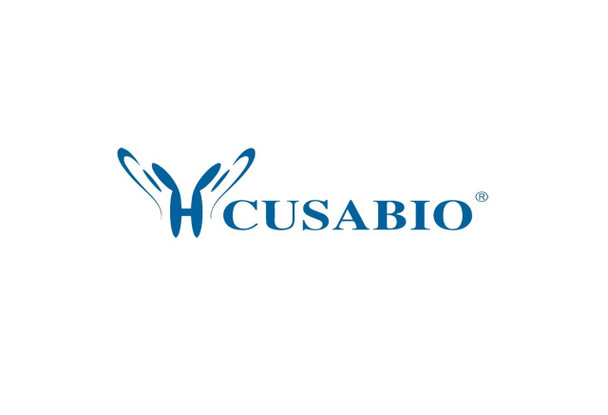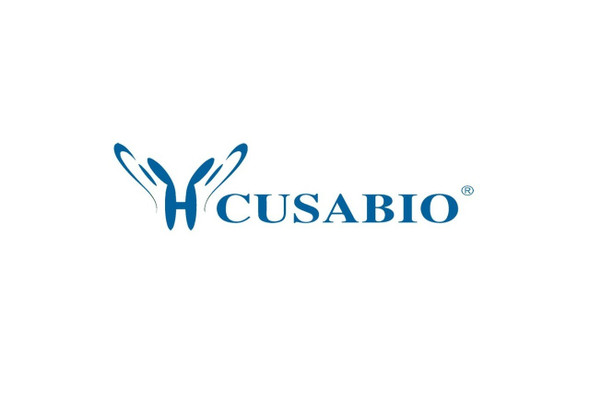Cusabio Human Recombinants
Recombinant Human Protein MEMO1 (MEMO1) | CSB-EP896500HU
- SKU:
- CSB-EP896500HU
- Availability:
- 13 - 23 Working Days
Description
Recombinant Human Protein MEMO1 (MEMO1) | CSB-EP896500HU | Cusabio
Alternative Name(s): C21orf19-like protein Hepatitis C virus NS5A-transactivated protein 7
Gene Names: MEMO1
Research Areas: Signal Transduction
Organism: Homo sapiens (Human)
AA Sequence: MSNRVVCREASHAGSWYTASGPQLNAQLEGWLSQVQSTKRPARAIIAPHAGYTYCGSCAAHAYKQVDPSITRRIFILGPSHHVPLSRCALSSVDIYRTPLYDLRIDQKIYGELWKTGMFERMSLQTDEDEHSIEMHLPYTAKAMESHKDEFTIIPVLVGALSESKEQEFGKLFSKYLADPSNLFVVSSDFCHWGQRFRYSYYDESQGEIYRSIEHLDKMGMSIIEQLDPVSFSNYLKKYHNTICGRHPIGVLLNAITELQKNGMNMSFSFLNYAQSSQCRNWQDSSVSYAAGALTVH
Source: E.coli
Tag Info: N-terminal GST-tagged
Expression Region: 1-297aa
Sequence Info: Full Length
MW: 60.7 kDa
Purity: Greater than 90% as determined by SDS-PAGE.
Relevance: May control cell migration by relaying extracellular chemotactic signals to the microtubule cytoskeleton. Mediator of ERBB2 signaling. The MEMO1-RHOA-DIAPH1 signaling pathway plays an important role in ERBB2-dependent stabilization of microtubules at the cell cortex. It controls the localization of APC and CLASP2 to the cell membrane, via the regulation of GSK3B activity. In turn, membrane-bound APC allows the localization of the MACF1 to the cell membrane, which is required for microtubule capture and stabilization. Is required for breast carcinoma cell migration.
Reference: "From PREDs and open reading frames to cDNA isolation: revisiting the human chromosome 21 transcription map." Reymond A., Friedli M., Neergaard Henrichsen C., Chapot F., Deutsch S., Ucla C., Rossier C., Lyle R., Guipponi M., Antonarakis S.E. Genomics 78:46-54(2001)
Storage: The shelf life is related to many factors, storage state, buffer ingredients, storage temperature and the stability of the protein itself. Generally, the shelf life of liquid form is 6 months at -20?/-80?. The shelf life of lyophilized form is 12 months at -20?/-80?.
Notes: Repeated freezing and thawing is not recommended. Store working aliquots at 4? for up to one week.
Function: May control cell migration by relaying extracellular chemotactic signals to the microtubule cytoskeleton. Mediator of ERBB2 signaling. The MEMO1-RHOA-DIAPH1 signaling pathway plays an important role in ERBB2-dependent stabilization of microtubules at the cell cortex. It controls the localization of APC and CLASP2 to the cell membrane, via the regulation of GSK3B activity. In turn, membrane-bound APC allows the localization of the MACF1 to the cell membrane, which is required for microtubule capture and stabilization. Is required for breast carcinoma cell migration.
Involvement in disease:
Subcellular Location:
Protein Families: MEMO1 family
Tissue Specificity:
Paythway:
Form: Liquid or Lyophilized powder
Buffer: If the delivery form is liquid, the default storage buffer is Tris/PBS-based buffer, 5%-50% glycerol. If the delivery form is lyophilized powder, the buffer before lyophilization is Tris/PBS-based buffer, 6% Trehalose, pH 8.0.
Reconstitution: We recommend that this vial be briefly centrifuged prior to opening to bring the contents to the bottom. Please reconstitute protein in deionized sterile water to a concentration of 0.1-1.0 mg/mL.We recommend to add 5-50% of glycerol (final concentration) and aliquot for long-term storage at -20?/-80?. Our default final concentration of glycerol is 50%. Customers could use it as reference.
Uniprot ID: Q9Y316
HGNC Database Link: HGNC
UniGene Database Link: UniGene
KEGG Database Link: KEGG
STRING Database Link: STRING
OMIM Database Link: OMIM









